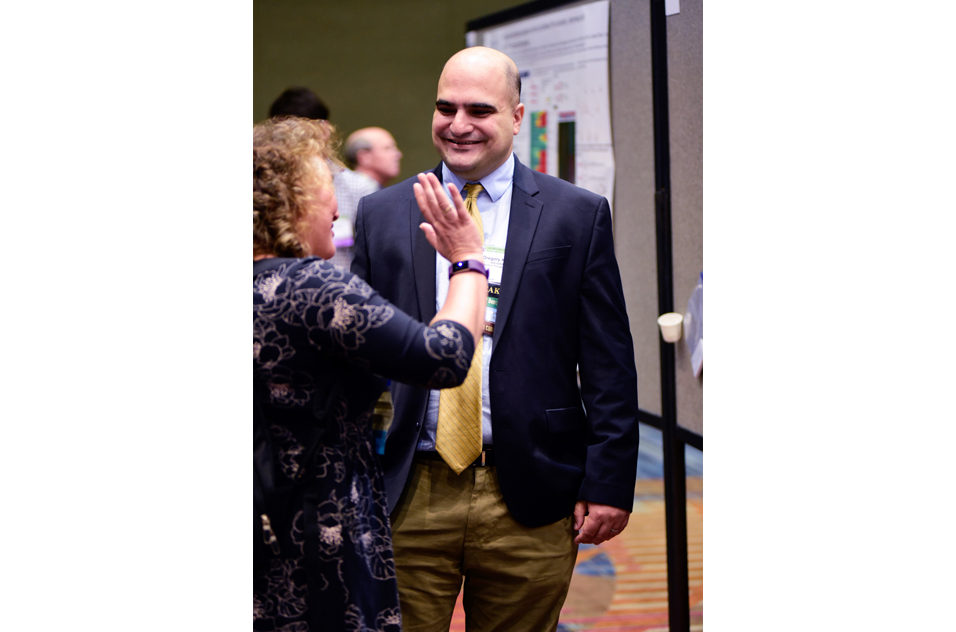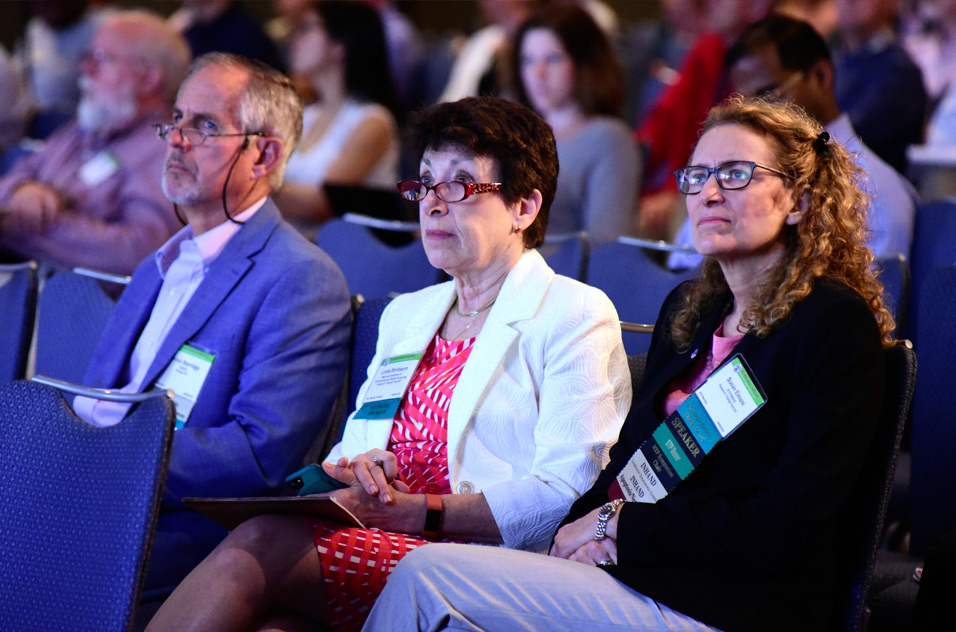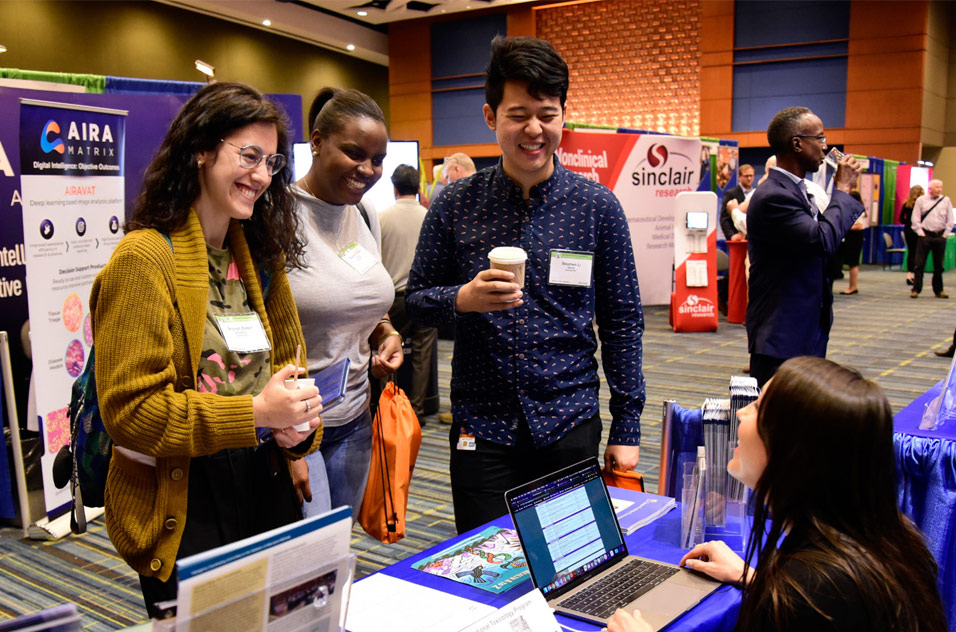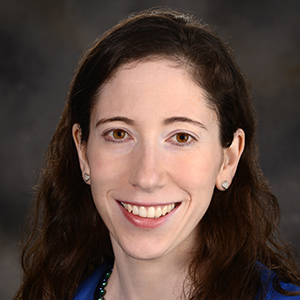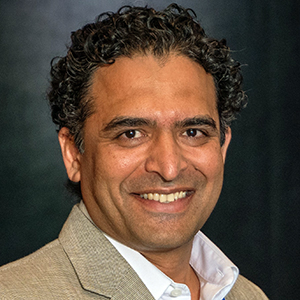Organizers of the Society of Toxicologic Pathology’s (STP) annual meeting set their sights on environmental factors involved in disease. A particular focus was on One Health, which emphasizes connections between humans, animals, and the environment, with the goal of improving the health of all. Members gathered in Raleigh, North Carolina for the June 22-27 event.
“So many people in this society have contributed to … discoveries in this area [environmental toxicology],” said Jack Harkema, D.V.M., Ph.D., from the University of Michigan, one of the scientific co-chairs of the meeting.
Because of the society’s interest in the interplay of One Health, the environment, and toxicants, it made sense for our own director, Linda Birnbaum, Ph.D., to be invited as the keynote presenter.
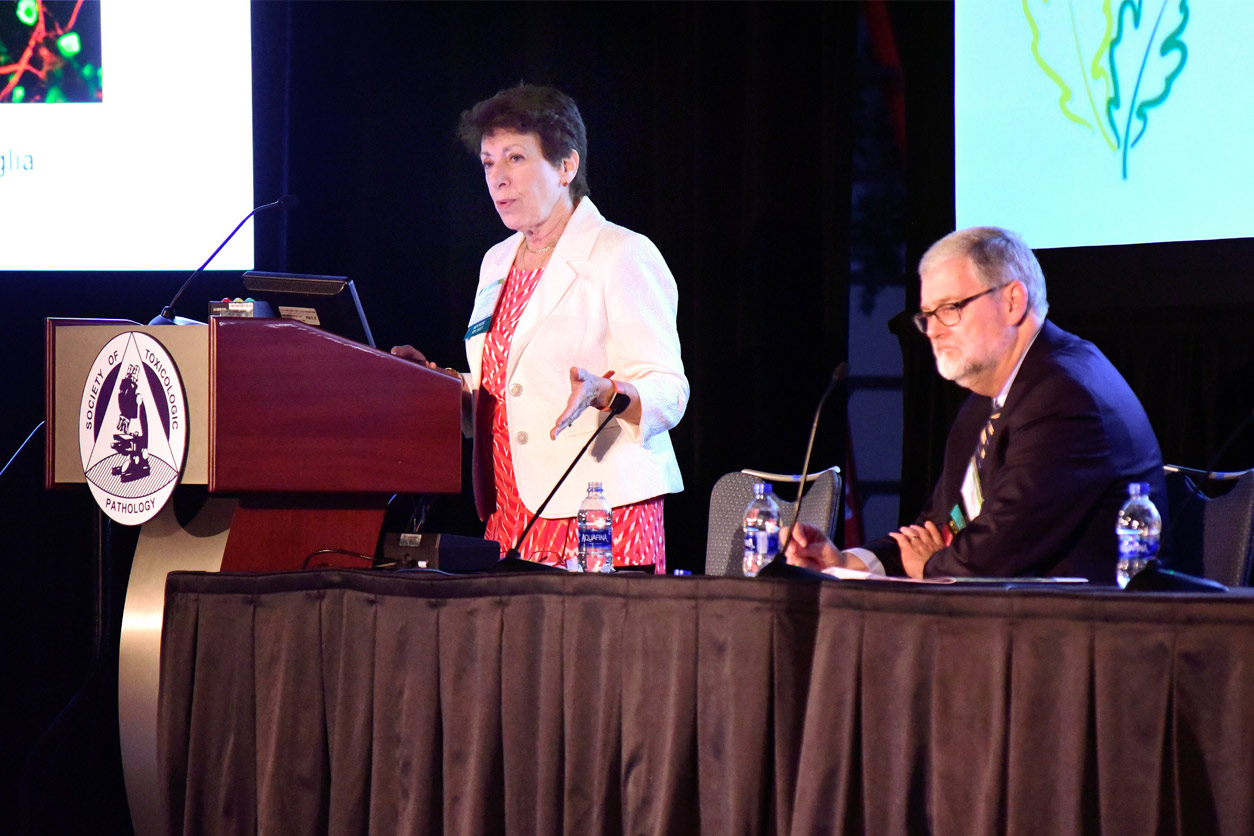 Harkema, right, welcomed Birnbaum to the podium. (Photo courtesy of Steve McCaw)
Harkema, right, welcomed Birnbaum to the podium. (Photo courtesy of Steve McCaw)Birnbaum presents One NIEHS
“My view has always been One NIEHS,” she said. “Our scientists and staff are working together and are aware of what others are doing, in the same vein as the One Health initiative. A One Health framework incorporates all aspects of the environment and fills the need to protect public health.”
She used air pollution as an example for the work NIEHS is doing. “Air pollution is a complex mixture of different kinds of exposures, so we need to be thinking broadly about this issue,” she explained.
Air pollution has been associated with wide-ranging health effects, such as the following.
- Diseases such as obesity, type 2 diabetes, cancer, and Alzheimer’s.
- Low birth weight, especially later in pregnancy.
- Increase and worsening of asthma.
- Changes in brain development, cognition, and behavior in children.
“NIEHS is trying to integrate what’s going on at a broader level through all parts of the institute,” Birnbaum said, describing the variety of air pollution research conducted by in-house researchers, grantees, and as part of the institute’s Global Environmental Health program.
Cell phone talk draws a crowd
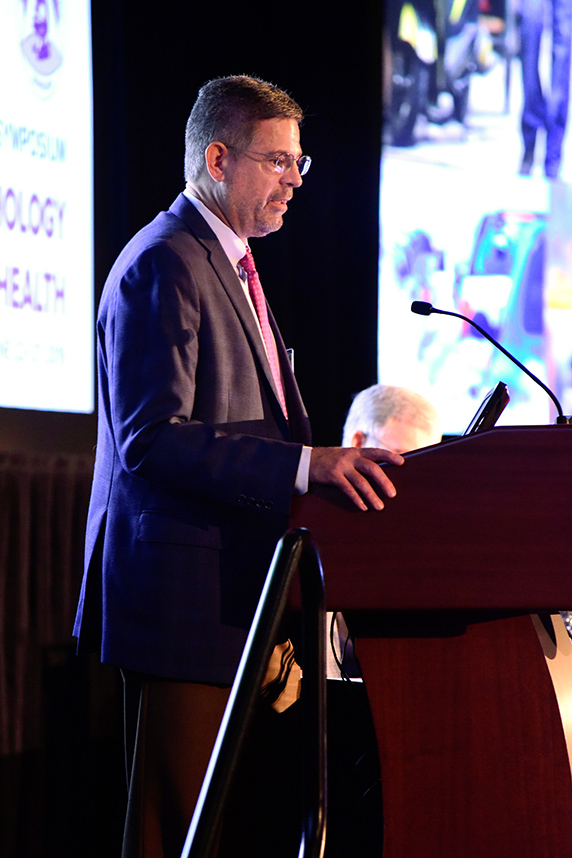 Cesta co-chaired the “Toxicology and Pathology of Air Pollution” session with Harkema and served on the meeting’s scientific program committee. (Photo courtesy of Steve McCaw)
Cesta co-chaired the “Toxicology and Pathology of Air Pollution” session with Harkema and served on the meeting’s scientific program committee. (Photo courtesy of Steve McCaw)The conference schedule was also chock full of other talks by researchers from NIEHS and the National Toxicology Program (NTP). Mike Wyde, Ph.D., and Mark Cesta, D.V.M., Ph.D., drew a large crowd to their overview of cell phone radio frequency radiation studies in rats and mice.
“Cell phone usage has steadily increased, with an estimated exposure of five billion people,” said Wyde, who described how the study was designed and conducted. Then, Cesta discussed the tumor data from the study and how it was interpreted. The audience expressed high interest in the detailed images he showed.
Other toxicologic research shines
Darlene Dixon, D.V.M., Ph.D., from NTP, chaired a session on endocrine disruptors and reproduction. Panelist Wendy Jefferson, Ph.D., from NIEHS, discussed exposures to estrogen during early development. One example was prenatal exposure to diethylstilbestrol (DES), which was prescribed to pregnant women in the 1940s-1970s.
“It was thought DES would help prevent miscarriage, and it was given to many women like a vitamin,” said Jefferson. “Unfortunately, it had a very high incidence of reproductive tract abnormalities, such as infertility, ectopic pregnancies, and premature births.”
“There are many chemicals in the environment that have estrogenic activity,” she said, listing plasticizers, some medications, pesticides, bisphenol A (BPA), soy products, cosmetics and lotions, and others. “What we want to know is how these chemicals cause their effects and if are they permanent.”
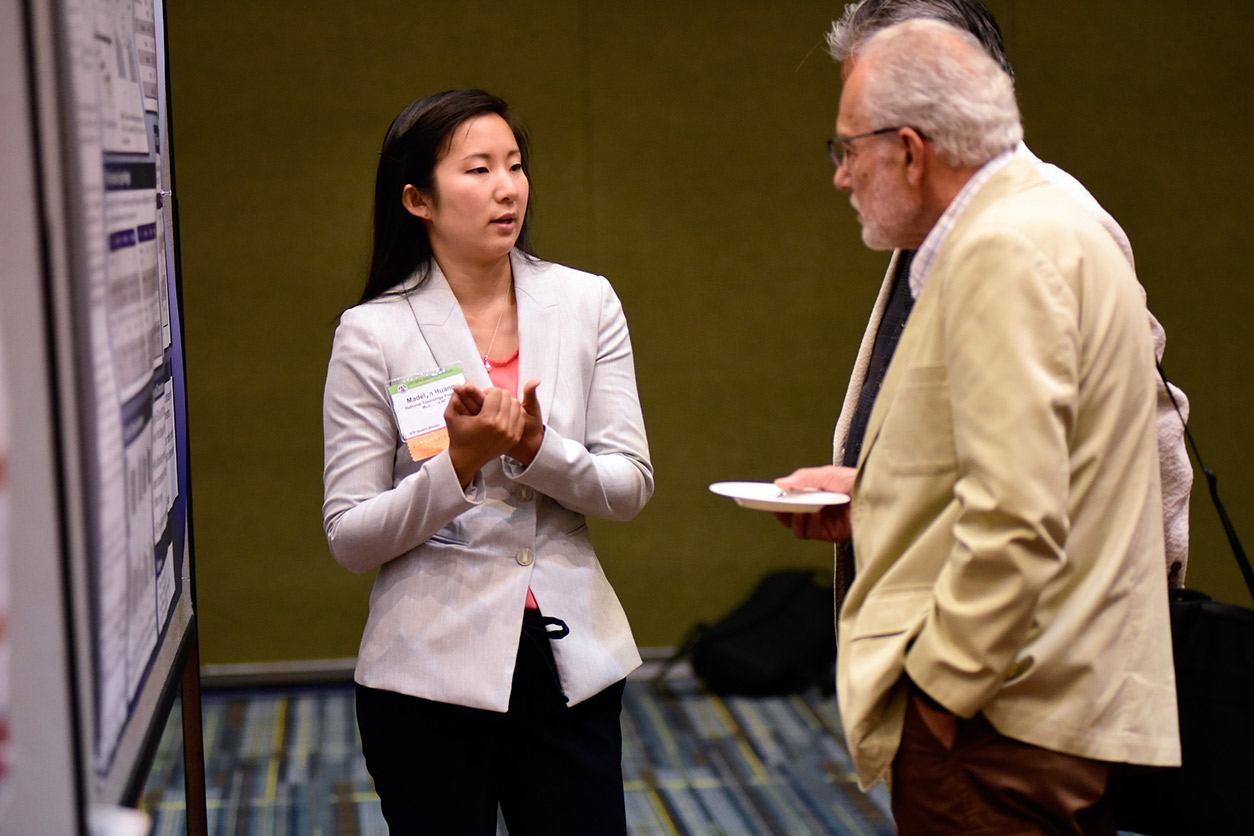 Huang shared her research results on black cohosh extract, which does not show estrogenic effects, although it is marketed to women for symptoms of menopause. (Photo courtesy of Steve McCaw)
Huang shared her research results on black cohosh extract, which does not show estrogenic effects, although it is marketed to women for symptoms of menopause. (Photo courtesy of Steve McCaw)NIEHS-funded researcher Scott Belcher, Ph.D., from North Carolina State University, discussed the CLARITY-BPA consortium. His group is trying to understand how BPA and other endocrine-disrupting chemicals affect the heart.
Michelle Cora, D.V.M., presented data from the NTP class comparison study of seven per- and polyfluoroalkyl substances (PFAS) in rats. She described some of the clinical pathology and related tissue changes discussed in upcoming NTP reports that are slated to be published by the end of summer.
(Sheena Scruggs, Ph.D., is digital outreach coordinator in the NIEHS Office of Communications and Public Liaison.)





